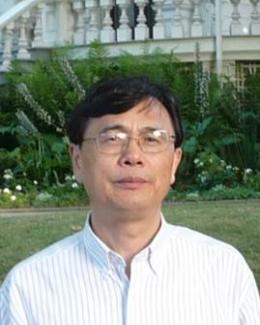Abstract
Nano zero-valent iron via green synthesis (g-nZVI) has great potential in removing toxic hexavalent Cr(VI) from industrial wastewater. Sulfate and phosphate in wastewater can influence Cr(VI) removal by g-nZVI. In this study, the Cr(VI) removal kinetics by different g-nZVI materials were investigated with the existence of sulfate and/or phosphate, and the corresponding mechanisms were first revealed using multiple characterizations, including X-ray absorption near-edge spectra (XANES) and X-ray photoelectron spectroscopy (XPS). The results showed that Cr(OH)3 was the dominant species initially formed on the surface of g-nZVI particles before transforming to Cr2O3 during the reaction of g-nZVI with Cr(VI). Sulfate in wastewater can promote the reduction from Cr(VI) to Cr(OH)3 by g-nZVI, because sulfate triggers the release of Fe(II) and tea polyphenols (from tea extracts) from the g-nZVI surface due to the corrosion of Fe0 core, which is in line with an obvious increase in pseudo-second-order rate constant (k2) and subtle change in Cr(VI) removal capacity (qe). However, phosphate impedes the g-nZVI corrosion and inhibits qe because of the inner-sphere complexation of phosphate onto g-nZVI decreasing the released Fe(II) for Cr2O3 production. When sulfate and phosphate coexisted in contaminated water, the inhibition effect of phosphate in Cr(VI) removal by g-nZVI was stronger than the promotion of sulfate. Accordingly, qe value of g-nZVI declined from 93.4 mg g−1 to 77.5 mg g−1, while k2 remained constant as the molar ratio of phosphate/sulfate increased from 0.1 to 10 in water. This study provides new insights into applying g-nZVI in efficient Cr(VI) removal from contaminated water with enrichment of sulphates and phosphates.


